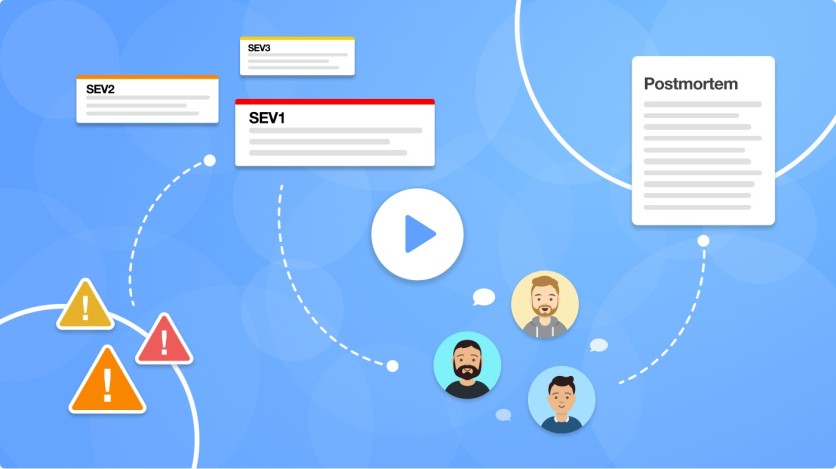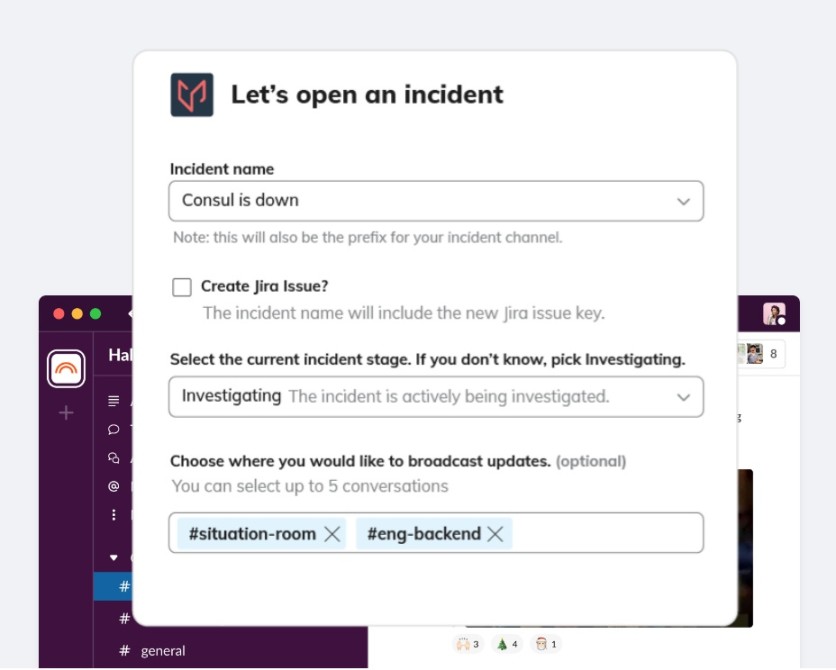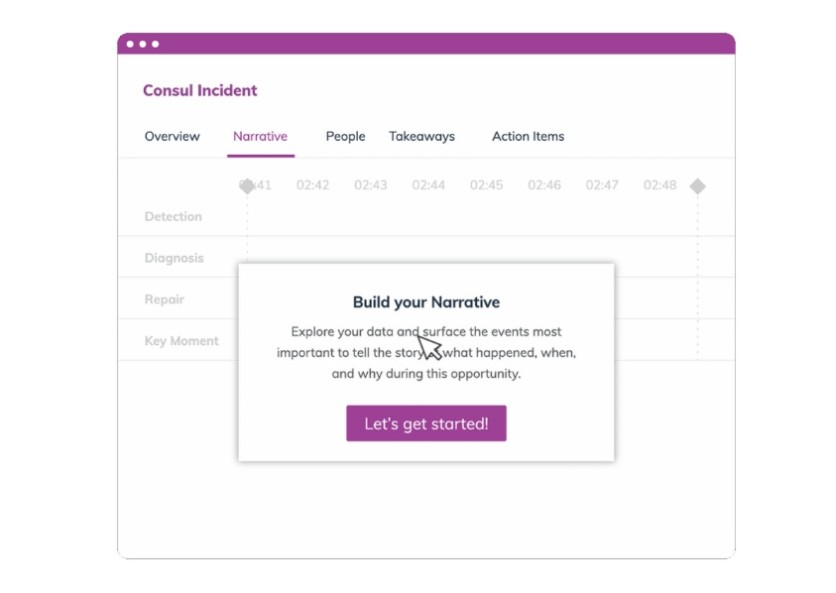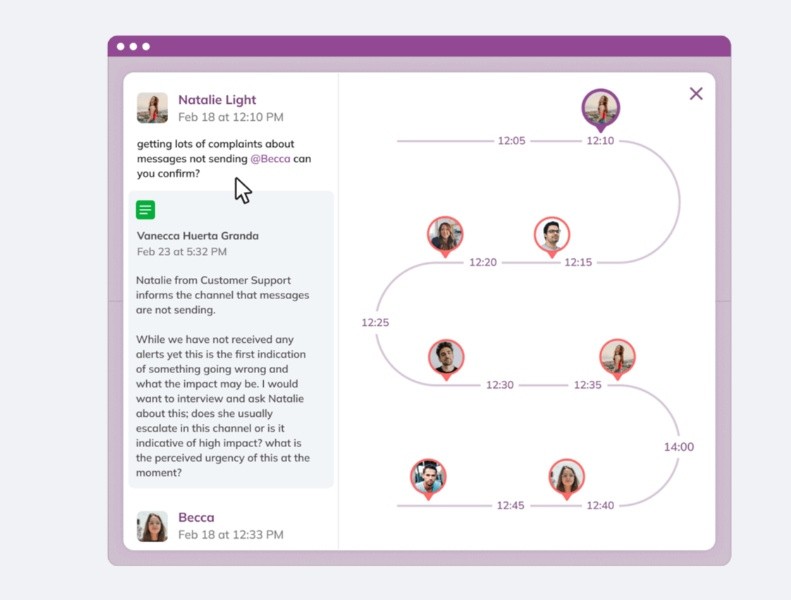
Organizations, regardless of their size, encounter incidents that lead to prolonged downtime, significant revenue losses, and unhappy customers. These incidents can be related to anything from security issues like DDoS attacks, data breaches, or ransomware as well as productivity/production matters causing delays or stoppages in operations. Having an appropriate incident management solution is crucial to help organizations swiftly resolve such issues and prevent their recurrence, ensuring they are better prepared to handle similar situations in the future.
What Are Incident Management Solutions?
Incident management solutions enable organizations to react quickly to incidents, ensuring security and operational disruptions are promptly addressed. Moreover, these solutions teach organizations to be proactive in preventing similar incidents and implement measures to mitigate their impact in case they happen again.
Benefits of Using Incident Management Solutions
Rapid Problem Resolution/De-escalation: Utilizing AI technology, these solutions enable organizations to identify issues swiftly and apply the correct solutions, avoiding costly downtimes and ensuring uninterrupted service delivery to clients.
Better Operational Efficiency: Incident management solutions allow organizations to learn from each incident, leading to improved operational knowledge over time. This enhances operational efficiency and service levels, benefiting both the organization and its clients.
Improved User Experience: With incidents resolved quickly, end-users experience improved service quality. Incident reporting, communication, and solutions are facilitated through an easy-to-navigate user interface, enhancing the overall user experience.
In-depth Incident Analysis/Insights: Each incident provides valuable information, including the root cause, the team members involved, and the resolution path. Storing this data in a database facilitates reference and aids in developing operational guidelines for future similar incidents.
Satisfied Service Level Agreements (SLAs): Organizations often have specific parameters in SLAs, and incident management solutions help them meet key performance indicators (KPIs) outlined in these agreements, ensuring they deliver the expected services to their customers.
Best Incident Management Solutions
Here are the top 5 incident management solutions worth considering in 2023:
No.1 Jeli

Pros: The only end-to-end incident management platform that offers effective post-incident analysis.
Cons: Not as well-established as other industry players like PagerDuty, which has a firm hold on the market.
Jeli is an end-to-end incident management solution that empowers organizations to effectively handle incidents from start to finish by offering a seamless platform for declaration, collaboration, mitigation, and analysis of incidents. This innovative startup is enabling rapid response to incidents, identification of patterns, and extraction of valuable lessons to enhance future prevention and mitigation measures.
Features
Incident Response Bot

The Jeli IR Bot is an integration with Slack, which optimizes workflows and automates communication with stakeholders. It facilitates the management of reminders and to-do lists, ensuring nothing falls through the cracks during incident response. Once an incident is resolved, the bot automatically creates an opportunity in Jeli, complete with valuable insights for incident analysis.
Narrative Builder (Enhanced with AI)

Narrative Builder puts together the story about how events unfolded, using AI to highlight key moments associated with the Detection, Diagnosis, and Repair phases of an incident while surfacing the knowledge possessed by key stakeholders across the organization involved with the incident. Team members can now work alongside Jeli automation to tag, categorize, and edit the incident timeline created by Jeli.
People View

Jeli's People View provides a comprehensive overview of the individuals who participated in various incidents. This visualization allows teams to optimize on-call rotations, proactively address employee burnout, and select the right people with relevant experience for future incidents. By having a readily accessible lineup of skilled individuals, organizations can ensure efficient and effective responses to incidents.
Incident Analysis

Jeli is the only tool on the list that prioritizes post-incident analysis to a degree that we find satisfactory. Jeli surfaces relevant data to understand what happened after an incident has been closed and also helps companies identify trends across multiple incidents. A culture shift is required to take full advantage of the Jeli platform - but companies that embrace the full incident management process will turn their incidents and failures into learnings and resilience.
No.2 incident.io

Pros: User-friendly interface, easy integration with client tools.
Cons: There's no incident analysis solution based on incidents.
The incident.io is another easy-to-use incident management tool with a straightforward user interface (UI). It features powerful workflow automation capabilities that allow organizations to handle specific incident management tasks without lifting a finger. Here are the other features of this incident management solution:
Seamless integration
Organizations can integrate incident.io into their existing tools, including PagerDuty and Jira. If your teams already use Slack, you can merge it with incident.io in no time.
Visibility for everyone
With incident.io, all incidents can be visible to team members across your organization. You can enhance incident transparency by posting updates, assigning actions and roles, and accessing data on all live incidents in a dedicated channel.
Workflow automation
You can do away with time-consuming tasks with incident.io's automation feature. Automating specific tasks like email notifications can focus your resources and time on more critical aspects of incident management and daily operations.
Improved products & more satisfied employees
Moving forward, incident.io can help users make better response measures from lessons brought by past incidents. This way, they can improve their products and make employees happier by taking off much of their stress from handling incidents.
No.3 FireHydrant

Pros: Turn-by-turn Slack guidance, analytics.
Cons: Built only for Site Reliability Engineers (SREs) when modern incident management should involve more of the organization.
FireHydrant is another incident management tool used primarily by Site Reliability Engineers (SREs). Despite this apparent limitation to its applicability, it is nonetheless used by many organizations. These are the essential features of this incident management platform:
Rapid setup
FireHydrant prides itself in its straightforward incident creation, assembly of response members, and workflow automation through Runbooks integration. The results lowered stress levels among team members since FieHydrant does many complicated tasks for them.
Turn-by-turn guidance & seamless collaboration
Organizations can deploy their SREs quickly and rely on FireHydrant's turn-by-turn guidance via Slack. This platform uses Slack to let team members coordinate for a more straightforward, quicker response.
Fully usable retrospectives
Users will find FireHydrant's retrospectives highly usable in incident management. The system automatically captures incident data, offers guided retrospective templates, and gives everyone a clear view of critical data for informed decisions.
Integrated incident metrics
FireHydrant has built-in MTT metrics (such as Mean Time To Acknowledge, Mean Time To Resolve, Mean Time To Failure, and Mean Time To Detect) that lets organizations take proactive measures. They can also learn from such data to employ appropriate prevention and mitigation efforts for future incidents.
No. 4 Datadog Incident Management

Pros: All live incidents are carefully cataloged for ready reference and multi-device availability (web, Android, and iOS).
Cons: Datadog is a great observability and monitoring platform, but its incident management solution leaves a lot to be desired.
DataDog Incident Management is a great repository of all live incidents, traces, metrics, and logs that users can view anytime. Organizations can quickly filter the incidents they want to know more about and rapidly notify team members to activate incident response protocols. Know more about the features of the DataDog Incident Management tool here:
Multi-device support
Organizations can access DataDog Incident Management through the web and devices running on iOS and Android. From there, they can create/log incidents and manage everything.
Real-time incident updates
It's easy to modify an incident's status to keep everyone apprised about ongoing efforts or resolved incidents. Users can update incident progress via a dedicated Slack channel or the DataDog incident overview page.
Multi-metrics logs
DataDog automatically logs all relevant metrics regarding every incident. These analytic data include incident count, customer impact duration, mean time to repair, and mean time to resolve.
Effortless system integration
Users won't have difficulty merging DataDog with their existing incident management solutions, including Webhooks, Opsgenie, Jira, and PagerDuty. This makes things more convenient for organizations since they can improve their incident management capabilities by adding DataDog.
No.5 PagerDuty

Pros: Great at routing alerts and managing on-call rotations.
Cons: Lack of innovation over the past couple of years.
The PagerDuty Operations Cloud is among the industry's most highly trusted incident management solutions, with over 25,000 companies using it. Aside from the sheer number of users, here are the other things that PagerDuty has to offer:
PagerDuty DevOps
PagerDuty DevOps puts machines first on the response line before calling in the big guns - the organization's army of engineers. This setup helps conserve resources and allows organizations to prioritize more important matters.
PagerDuty AIOPs
The PagerDuty AIOps allows organizations to remove manual steps from their incident management equations. Using automation and machine learning, this feature helps teams arrive at the best solutions without going through labor-intensive ones. This way, incidents get resolved quicker and more efficiently, saving time, resources, and workforce.
PagerDuty CSOps
PagerDuty's CSOps feature lets organizations mobilize response efforts to Customer Service Operations and address incidents remotely, with some automation options. In case of problems with digital services, it's easy to kickstart response processes using the PagerDuty CSOps feature to normalize the situation.
The Necessity of Incident Management Solutions
Every company has incidents. By embracing them as learning opportunities, you will drastically improve the culture of your organization internally and the satisfaction of your customers externally. Consider the pros and cons and the features each solution provides, and pick the best incident management solution that meets your organization's needs.
ⓒ 2025 TECHTIMES.com All rights reserved. Do not reproduce without permission.




